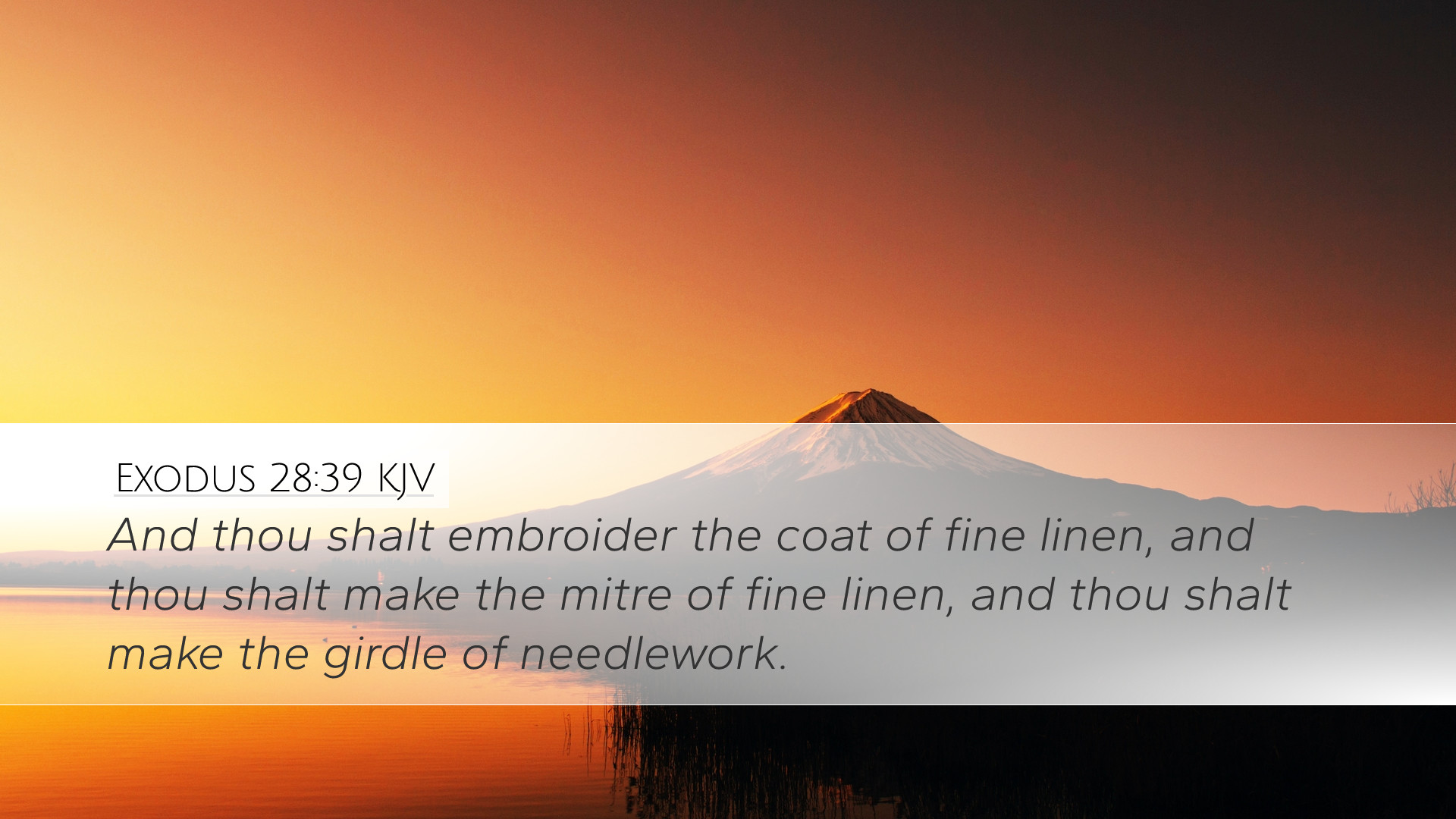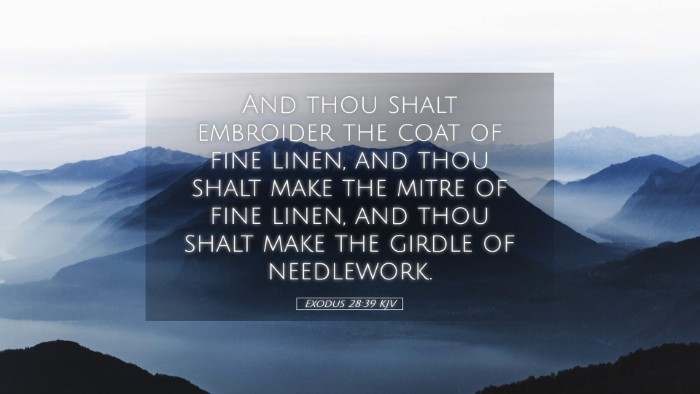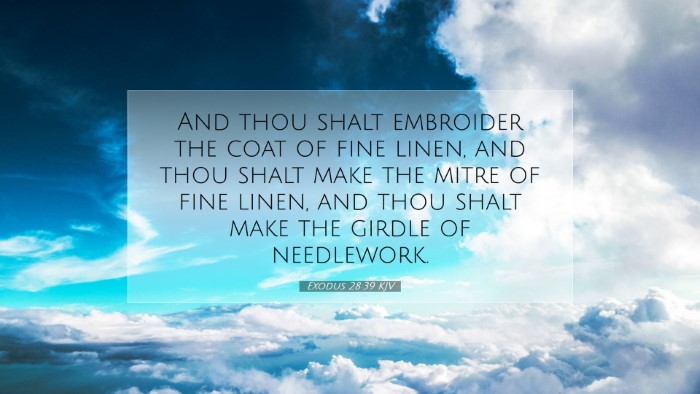Exodus 28:39 - Bible Commentary Summary
Verse Reference: Exodus 28:39 - "And thou shalt embroider the coat of fine linen, and thou shalt make the mitre of fine linen, and thou shalt make the girdle of needlework." (KJV)
Introduction
This verse is an integral part of the instructions given to Moses concerning the priestly garments for Aaron and his sons. It emphasizes the significance of beauty and holiness in the attire designated for worship. The garments serve both practical and symbolic functions, reflecting the Lord's glory and the dignity of the priestly office.
Commentary Insights
1. The Importance of Priesthood Garments
According to Matthew Henry, the garments were not merely for aesthetic pleasure but served to convey the holiness and dignity of the priestly role. The sacred attire was meant to distinguish the priests from others and to affirm their calling to God's service. The priest’s attire was a reminder that they acted as mediators between God and the people, which required their appearance to embody the sanctity of their mission.
2. Significance of Embroidery and Fine Linen
Albert Barnes notes the importance of the materials mentioned—fine linen and intricate embroidery. Fine linen, often associated with purity, served to remind both the priests and the congregation of the holiness required in drawing near to God. The act of embroidery symbolizes the intricate detail of God's creation and plans for His people. Thus, the materials and craftsmanship involved were reflections of divine artistry, urging a similar devotion in spiritual practice.
3. The Mitre and Girdle
Adam Clarke elaborates on the significance of the mitre and girdle. The mitre, a headpiece worn by the high priest, symbolized the priest's elevated status and role in intercession for the people. The girdle, often likened to a belt, provided practical function but also symbolized readiness and service. Collectively, these garments showcase the themes of readiness, dedication, and adornment befitting one who stands before God on behalf of Israel.
4. Symbolic Reflection in New Testament Context
The garments described in this verse can be seen as a foreshadowing of Christ's priesthood. Just as Aaron was clothed in glory and beauty, so Christ embodies the ultimate fulfillment of the high priestly role, adorned with righteousness. Matthew Henry suggests that this connection leads to a deeper understanding of our own spiritual attire, as New Testament believers are called to be clothed in Christ and His righteousness.
5. The Call to Holiness in Worship
This verse calls us to reflect on the manner in which we approach worship today. Albert Barnes categorically affirms that though we may not wear ‘priestly garments’ in the same physical sense, the principle remains: God desires us to approach Him with reverence and dignity. This means being spiritually clothed (as Paul elaborates in Ephesians 6 about the armor of God) that enables us to stand firm against spiritual adversity.
6. Application for Modern Believers
The message of Exodus 28:39 transcends time; it is a call to embody holiness in our lives. Adam Clarke emphasizes that every believer is to engage in works that reflect God’s character. We are to be 'dressed' not only in fine linen works but in love, joy, peace, and righteousness. Our God-ordained roles—be they in ministry, family, or secular workplaces—should reflect the meticulous care and purity found in the garments of the ancient priests.
Conclusion
In summary, Exodus 28:39 serves as a profound reminder of the standards of beauty and holiness that God establishes for His people, particularly those who are called to minister in His name. The intricate details of the priestly garments serve not just historical relevance but a constant invitation to live in a way that is pleasing to God. May pastors, students, and scholars alike draw from these insights to strengthen their understanding of worship, service, and the holiness to which God calls us all.


